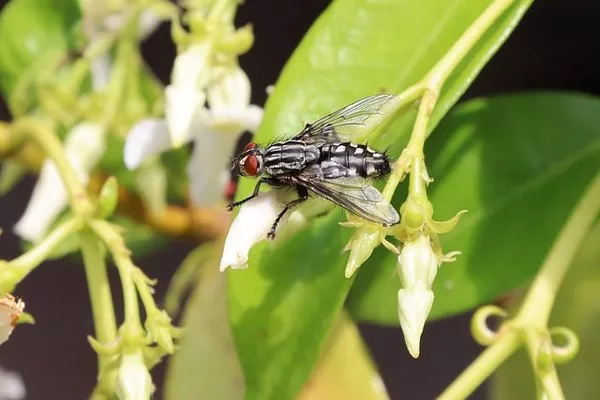Gnats, those tiny, pesky insects that seem to materialize out of nowhere and hover around your indoor plants, can be a nuisance for any plant enthusiast. These minuscule flies can infest your green oasis, causing damage to your beloved plants and making indoor gardening a less enjoyable experience. Fortunately, there are several effective strategies you can employ to eradicate gnats from your plants and ensure a healthy, thriving indoor garden.
Understanding Gnats
Before diving into the methods of eliminating gnats on plants, it’s important to understand the pests you’re dealing with. Gnats, commonly referred to as fungus gnats or fruit flies, are small flies that resemble tiny mosquitoes. They thrive in damp environments and feed on decaying organic matter, making your potting soil and plant containers prime breeding grounds.
The gnats you find hovering around your plants are usually adults, while their larvae, often unseen, live in the soil and feed on the roots of your plants. This dual infestation can weaken your plants, leading to stunted growth and eventual decline if left untreated.
Maintain Proper Plant Hygiene
The first step in combating a gnat infestation is to maintain proper plant hygiene. By keeping your indoor garden clean and dry, you can significantly reduce the conditions that favor gnat reproduction. Here’s how to do it:
a. Remove Dead or Decaying Plant Matter: Regularly prune away dead or yellowing leaves and flowers. These decaying plant parts can serve as a breeding ground for gnats.
b. Clean Up Spilled Soil: Any spilled potting soil should be promptly cleaned up to prevent gnats from accessing a ready food source.
c. Avoid Overwatering: Overly damp soil is a prime breeding ground for gnats. Ensure your plants’ pots have proper drainage and only water when the top inch of soil feels dry to the touch.
d. Use a Layer of Sand: Placing a layer of sand on top of your plant’s soil can help deter gnats. Gnats find it difficult to lay their eggs in sand, reducing the likelihood of infestation.
Yellow Sticky Traps
Yellow sticky traps are a simple yet effective tool for monitoring and reducing gnat populations. These traps are coated with a sticky substance that attracts and captures flying adult gnats. Place the traps near your plants, ensuring they are at gnat eye level. Replace them as needed when they become covered with gnats. While sticky traps won’t eliminate the larvae in the soil, they can help control the adult population and reduce the annoyance factor.
Beneficial Nematodes
Beneficial nematodes are microscopic roundworms that can be used to combat gnat larvae in the soil. These nematodes are harmless to plants and humans but are deadly to gnat larvae. When introduced into the soil, they seek out and infect the larvae, preventing them from developing into adults.
To use beneficial nematodes, follow these steps:
a. Purchase nematodes from a reputable supplier.
b. Mix the nematodes with water according to the instructions on the package.
c. Water your plants with the nematode solution, ensuring it reaches the root zone.
d. Repeat the application as directed on the package.
Beneficial nematodes are a natural and environmentally friendly solution to gnat infestations, making them a preferred choice for many gardeners.
Neem Oil
Neem oil, derived from the neem tree, has been used for centuries as a natural pesticide and insect repellent. It can be an effective remedy for gnats on plants. Neem oil disrupts the life cycle of gnats by targeting both the larvae and adults. To use neem oil:
a. Mix a solution of neem oil and water according to the instructions on the product label.
b. Spray the solution directly onto the soil’s surface and the foliage of your plants.
c. Repeat the application every 7-10 days until the gnat infestation is under control.
Neem oil not only kills gnats but also has the added benefit of acting as a general pest deterrent for a variety of other common garden insects.
Soil Drying and Drenching
For severe gnat infestations, soil drying and drenching can be a more aggressive approach. This method disrupts the gnat larvae in the soil and can help break the cycle of infestation. Here’s how to do it:
a. Allow the top layer of soil to dry out completely. Gnats thrive in moist conditions, so depriving them of moisture is crucial.
b. Once the soil is dry, water it with a solution of a commercial insecticidal soap or hydrogen peroxide mixed with water. This drench will kill the larvae in the soil.
c. Continue to monitor and adjust your watering practices to maintain slightly drier conditions to discourage future infestations.
Diatomaceous Earth
Diatomaceous earth is a natural and non-toxic powder made from fossilized aquatic organisms. It’s highly effective at dehydrating and killing gnats, making it a valuable tool in the fight against infestations. To use diatomaceous earth:
a. Sprinkle a thin layer of diatomaceous earth on the soil’s surface.
b. Reapply as needed, especially after watering.
Be cautious when applying diatomaceous earth, as it can be harmful if inhaled. Use a dust mask and avoid letting it come into contact with your eyes and skin.
Conclusion
Gnats on your indoor plants can be a frustrating problem, but with the right strategies and persistence, you can eliminate these pests and keep your plants healthy. Remember to maintain proper plant hygiene, use yellow sticky traps, introduce beneficial nematodes, apply neem oil, and consider soil drying and drenching or diatomaceous earth as needed.
While it may take some time and effort to fully eradicate gnats, the result will be a thriving indoor garden free from these annoying insects. Regular monitoring and preventive measures will help ensure that your plants remain gnat-free, allowing you to enjoy your green oasis to the fullest.


